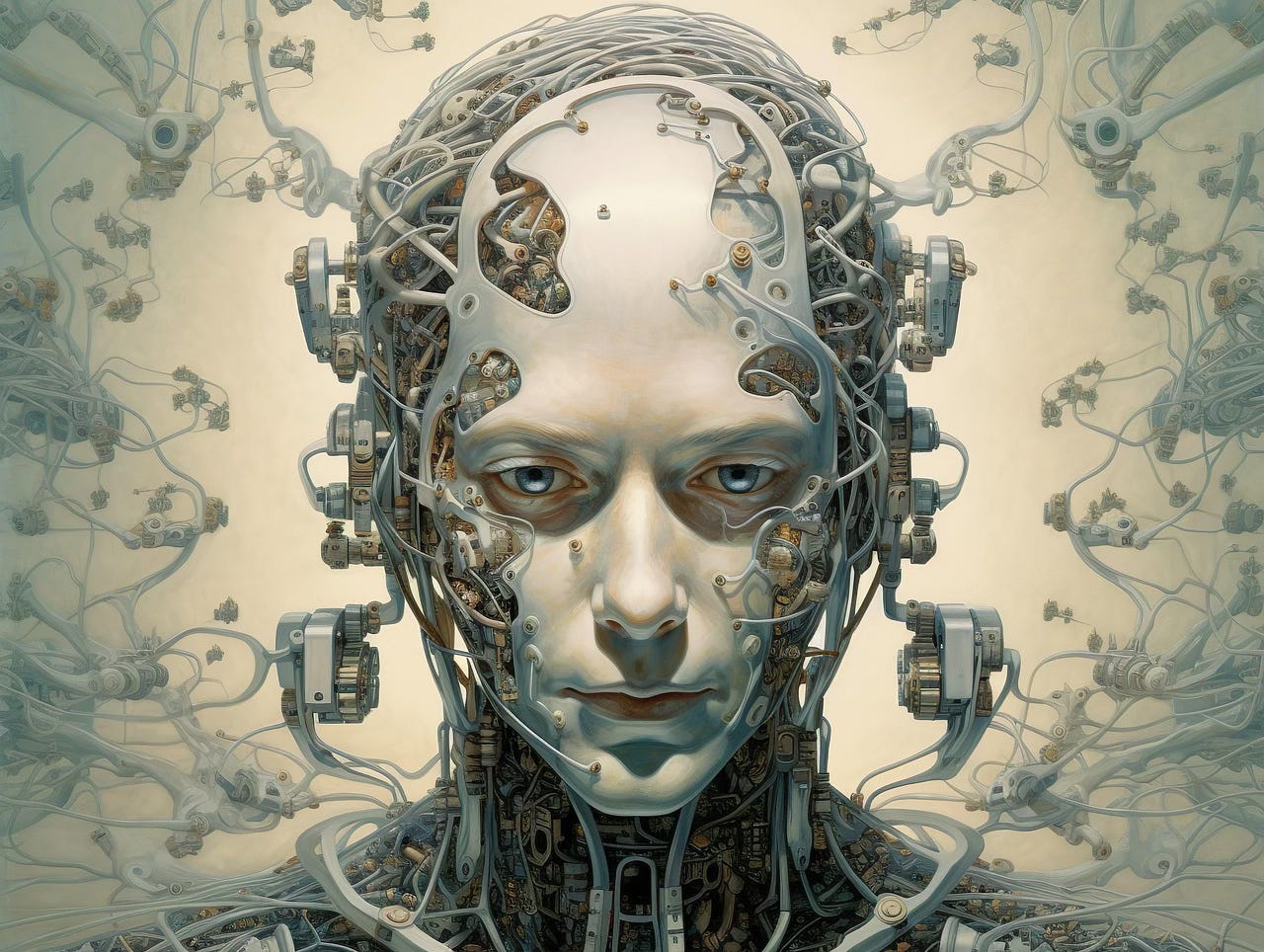ADHD in the Age of AI: Why the Future May Belong to the Distracted
Not every ADHD trait is a gift, but neither is it a flaw. It’s a variation: an ancient one, forged for a world of risk and opportunity.

For generations, society has treated ADHD as a defect, a disorder to be managed, a brain that needs fixing. Schools punish it. Workplaces stigmatize it. Pharma tries to medicate it into compliance. But what if the traits we associate with ADHD—hyper-responsiveness, scattered attention, novelty-seeking, impulsivity—are no longer liabilities in the emerging world? What if, in the age of AI, the future actually belongs to the distracted?
It’s a counterintuitive proposition, but stay with me. Artificial intelligence is rapidly automating everything structured, linear, and rule-based. That’s the territory of the “Farmer brain”: the organized, steady, persistent mindset prized since the dawn of agriculture. From spreadsheet wrangling to customer service scripts, from standardized testing to logistics planning, tasks built around consistency and predictability are being swallowed whole by machines. AI doesn’t sleep. It doesn’t get bored. It never forgets.
That’s not great news for farmer-brained people who thrive within traditional systems. But it opens the door for something else: something more adaptive, more agile, more human. As AI colonizes predictability, it leaves behind uncertainty, intuition, chaos, and creativity. It opens opportunities in what I call “Hunter territory.”
Hunters—our ADHD ancestors, and arguably our ADHD selves—have always thrived in unpredictable, high-stakes environments. They track, scan, pivot. Their attention isn’t “deficient,” it’s divergent: spread wide, not narrow. They don’t do well with repetitive tasks, but give them novelty, urgency, or danger and they light up like a Christmas tree.
In short, the kinds of brains we’ve pathologized for the last century may be the exact kind needed in the coming one.
This isn’t just romantic speculation. Creativity researcher Dr. Holly White has documented that people with ADHD often outperform neurotypical peers on tests of divergent thinking and originality. A 2024 study published in Frontiers in Psychology found that people with ADHD traits tend to explore problems more broadly and persistently—an ideal mindset for solving complex, ill-structured problems that AI can’t touch. Another team recently suggested that ADHD may represent a “specialist phenotype”—a subset of humans wired for exploration and risk-taking in unstable environments.
And here’s where it gets timely: the economy is shifting faster than our institutions can adapt.
Already we see mass layoffs in white-collar sectors once considered safe. According to a report from McKinsey, generative AI could automate up to 70% of business tasks in some industries. IBM recently paused hiring for any jobs that AI could replace. Education, accounting, law, journalism—the very professions that once rewarded compliance and attention to detail—are now in AI’s crosshairs.
So where does that leave the Hunters among us? Perhaps paradoxically, it leaves an opening for people whose brains don’t play by the old rules. ADHD people are fast. They’re creative. They’re intuitive. They don’t need to be told to think outside the box because they never lived in one to begin with. They’re also more likely to be entrepreneurs, inventors, first responders, and disruptors. All of that gets more valuable as AI eats the middle.
Of course, this doesn’t mean that ADHD is suddenly an easy ride. It’s not.
In a society still built for farmers, hunter brains continue to struggle, especially in school and corporate structures. But the cracks in those structures are widening. The very things we’ve punished in kids with ADHD—their restlessness, curiosity, resistance to authority—may be precisely what’s needed to navigate the next era. Especially as automation forces a deeper question: what is it that makes us irreplaceable?
One answer is attention. AI is great at prediction, but it doesn’t know how to notice. It can’t attend to the subtle or the sublime. It can’t chase a pattern without being told what to look for. Humans—especially hunter-type humans—are uniquely gifted at that. We notice what doesn’t fit. We react in real-time. We surprise.
Another answer is meaning. AI can mimic style and spit out content, but it has no intuition for truth or urgency. ADHD people are driven by those things, sometimes maddeningly so. we can’t fake interest, but when we care, we really care. And that fire, that obsessive drive toward purpose, is not just human. It’s essential.
There’s an irony in all this. For years, we’ve pushed ADHD kids into conformity, medicated them into submission, and told them they had to work harder just to be “normal.” But as AI renders normal obsolete, maybe it’s time we stopped trying to fix these brains and started learning from them. Maybe the real “deficit” is in our imagination.
I’m not arguing that we abandon structure or that ADHD should be left untreated. What I’m saying is that we need a cultural reframing. We need to stop seeing neurodivergence as a failure to conform and start seeing it as a form of strategic difference. Not every ADHD trait is a gift, but neither is it a flaw. It’s a variation: an ancient one, forged for a world of risk and opportunity.
And that world? It’s coming back.

